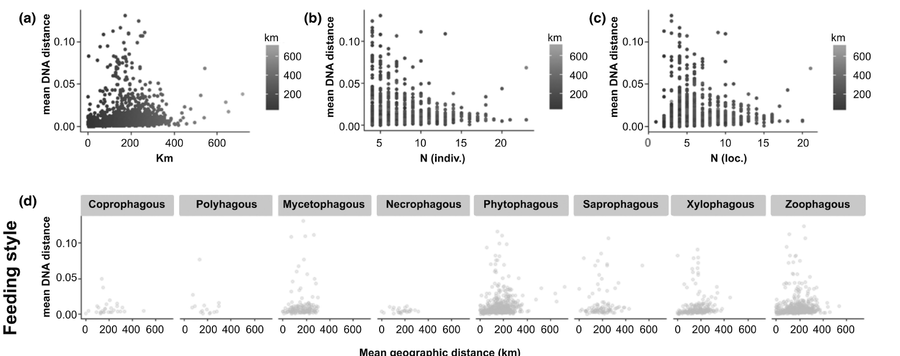
From DNA barcodes to ecology...
DNA barcoding has been used worldwide to identify biological specimens and to delimit
species. It represents a cost-effective, fast, and efficient way to assess biodiversity
with help of the public Barcode of Life Database (BOLD) accounting for more than 236,000 animal species and more than 10 million barcode sequences. Here, we performed a meta-analysis
of available barcode data of central European Coleoptera to detect intraspecific genetic patterns among ecological groups in relation to geographic distance with the aim to investigate a possible link between infraspecific variation and species ecology. We collected information regarding feeding style, body size, as well as habitat and biotope preferences. Mantel tests and two variants of Procrustes analysis, both involving the Principal Coordinates Neighborhood Matrices (PCNM) approach, were applied on genetic and geographic distance matrices. However, significance
levels were too low to further use the outcome for further trait investigation: these were in mean for all ecological guilds only 7.5, 9.4, or 15.6% for PCNM + PCA, NMDS + PCA, and Mantel test, respectively, or at best 28% for a single guild. Our study confirmed that certain ecological traits were associated with higher species diversity and foster stronger genetic differentiation. Results suggest that increased numbers of species, sampling localities, and specimens for a chosen area of interest may give new insights to explore barcode data and species ecology for the scope of conservation on a larger scale.






